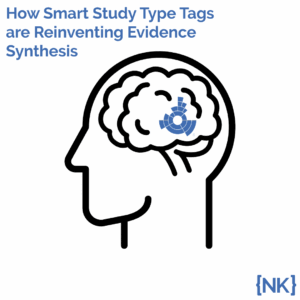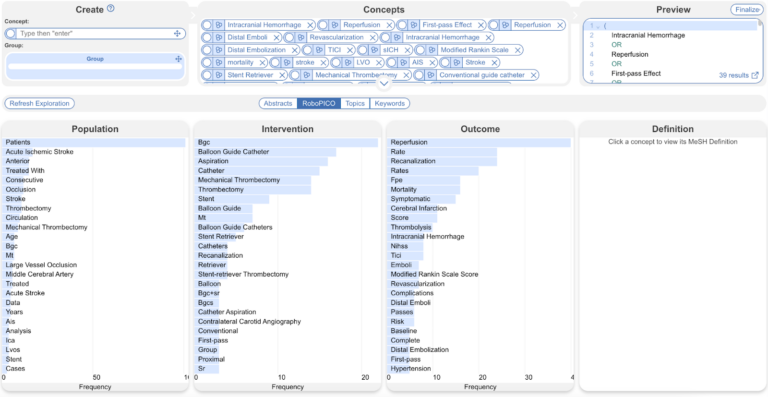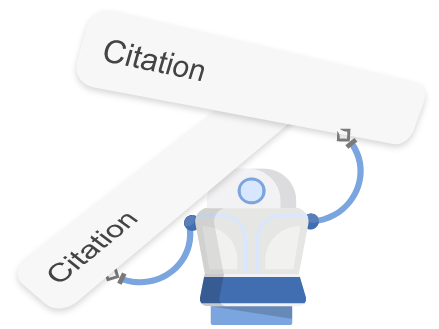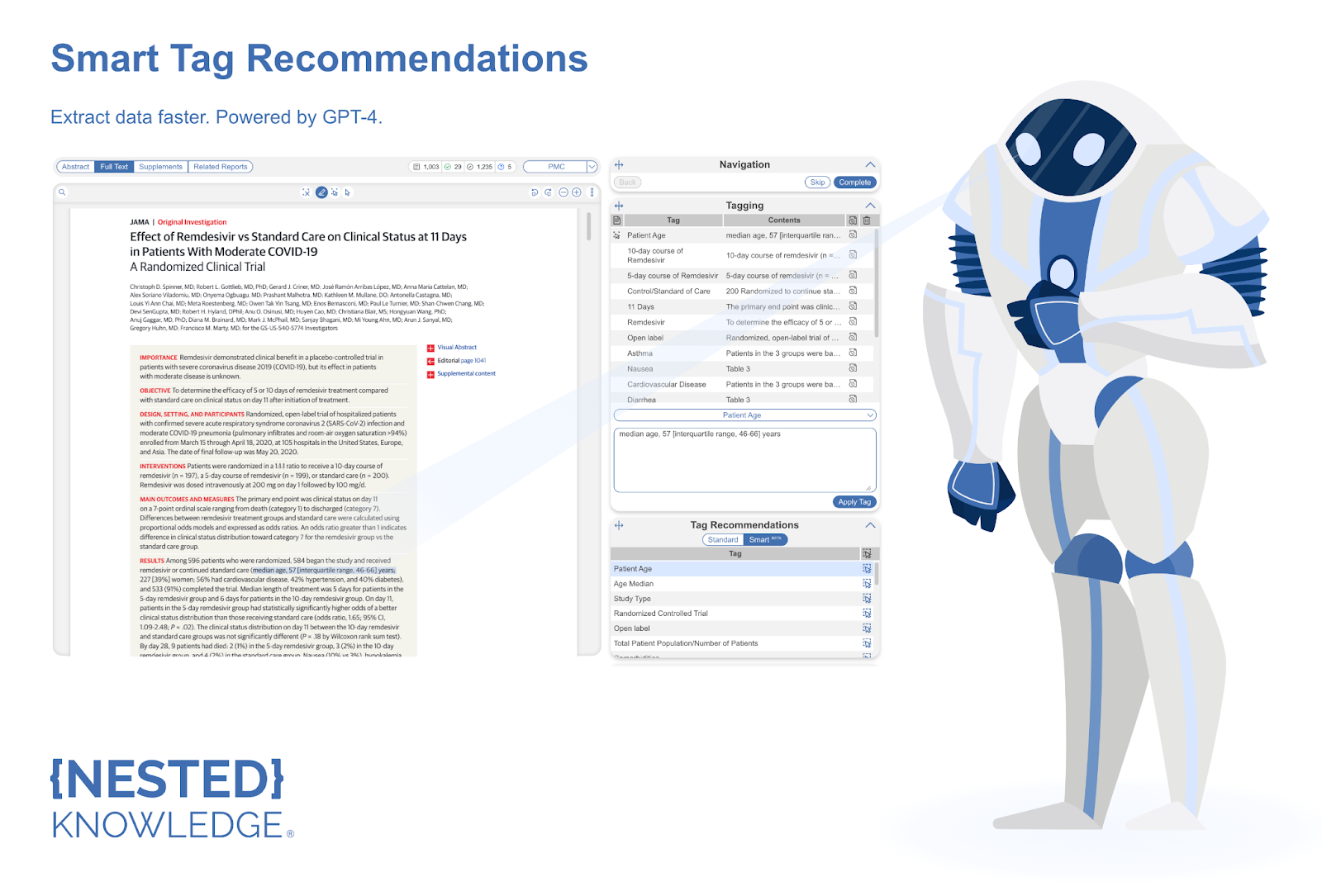
How Smart Study Type Tags Are Reinventing Evidence Synthesis
One of the features of Core Smart Tags is Smart Study Type – this refers to our AI system that automatically categorises the study type
RoboPICO is an optional PICO highlight tool, used to find the most commonly mentioned populations, interventions, and outcomes in the abstracts and titles. It first is used to help suggest terms of interest when query building in the Search Exploration tool. After you string a few concepts together and click explore, you will get a variety of Population, Intervention, and Outcome results, hence the name. RoboPico is then used to analyze the most common topics of underlying abstracts to identify terms that you could add to your query.
Later, during Screening, RoboPICO can be employed alongside user keywords to highlight abstracts for enhanced readability.


Bibliomine can be used to quickly extract citations from a previous systematic review or landmark study, and import the cited references as records directly into your Nest to serve as a starting point or supplement a literature search.
Once Bibliominer has been run on a full-text PDF, you’ll get a list of citations to pick and choose from. Any citations from that list can be imported as new records, which will go on to be treated just like any other study that was searched for or imported manually.
This allows you to quickly update your old systematic reviews and make them living and active. Alternatively, you can build upon a solid foundation by importing records from key studies in your field.
Here’s a YouTube video going over the tool step by step:

Want to save time screening through all of the studies gathered in your search? Here’s the tool for you.
Robot Screener is available in Dual Screening and Dual Two-Pass screening Modes. When active, Robot Screener replaces a human reviewer and gives suggestions on what to exclude and what to keep in the Nest. Robot Screener trains on the decisions made by your team, requiring 50 adjudicated screening decisions, 10 of which need to be included. By design, all Robot Screener decisions are preliminary and subject to approval by a human Adjudicator. Enabling Robot Screener will disable automatic updating to the screening model as well as the ability to show inclusion probabilities to human reviewers. This avoids biasing human reviewers with data already being used by Robot Screener.
Robot Screener is most suitable for large nests, where dual or dual two-pass screening is needed or desired, but where schedule leaves a team pinched for time.


Want to extract data faster?
This is where the new Smart Tag Recommendations come in!
Powered by GPT-4, Nested Knowledge has tailored the tool to benefit the user during the data extraction process. This tool provides valuable suggestions and cuts the time required to extract significantly.
How does it work? Unlike standard tag recommendations, Smart Tag Recommendations searches each currently included full text to find the exact tag, tag contents (verbatim excerpt), and tag content location. When you turn on Smart Tag Recommendations in Settings, a background job runs in order to identify the most likely location for each tag (given the hierarchy of tags) within the first ~6,000 words of each full text. Once the background job completes, all tag recommendations are made available in the Tagging module for a human reviewer to accept or ignore.
It’s important to note that there are slight differences between Forms-based Tagging and standard tagging. When Smart Tag Recommendations are run for Forms-based Tagging, the Tag Question is used in addition to the Tag Name in order to give the model more context.

One of the most time-consuming challenges in evidence synthesis is locating and extracting quantitative data for meta-analysis. Traditionally, this has involved manual review of full-text articles, with significant risk of error, bias, and time delays.
Smart MA Extraction, our latest AI-driven innovation, tackles this head-on. It uses advanced natural language processing to automatically identify and extract relevant numerical outcomes—such as risk ratios, mean differences, and confidence intervals—directly from the full text of included studies. It not only captures the data but also links each point to its exact location in the source document, enabling full transparency and reproducibility.
By accelerating the setup of meta-analyses, enhancing traceability, and reducing the manual burden of quantitative data extraction, Smart MA Extraction empowers researchers, HEOR teams, and medical writers to move from full text to forest plot faster than ever before—without compromising on quality or compliance. With structured output formats designed to integrate seamlessly into synthesis workflows, this tool represents a major step forward in AI-assisted evidence generation.

Yep, you read that right. We started making software for conducting systematic reviews because we like doing systematic reviews. And we bet you do too.
If you do, check out this featured post and come back often! We post all the time about best practices, new software features, and upcoming collaborations (that you can join!).
Better yet, subscribe to our blog, and get each new post straight to your inbox.

One of the features of Core Smart Tags is Smart Study Type – this refers to our AI system that automatically categorises the study type